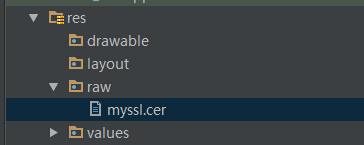前阵子看到圈子里Retrofit 2.0,RxJava(Android), OkHttp3.3 ,加之支持android和 iOS 的React Native , 火的不要不要的, 2015年新技术一大波来袭 ,看着自己项目还在用HttpClient, AsyncTask的原生开发 感觉自己已成火星人,实在顶不住内心的自卑压力,加之对新技术的追求,入手移动开发新三剑客,虽然目前关于他们的目前介绍的资料一大把,但是自己亲自实践后,发现坑不少,为了能方便其他人安全顺利入坑,今天就先从Retrofit说起,前方高能,准备躲避。
Retrofit 2.0
Retrofit是SQUARE美国一家移动支付公司最近新发布的在Android平台上http访问的开源项目
一 什么Retrofit
官方标语;A type-safe HTTP client for Android and Java
语意很明显一款android安全类型的http客户端, 那么怎么样才算安全?支持https?支持本地线程安全?
发现Rertofit其内部都是支持lambda语法(国内称只链式语法),内部支持okhttp, 并且支持响应式RxJAava,当然jdk1.8 和android studio工具也支持lambda。带着这些疑问 我开始探究一下。
在此之前准备入手资料:
国外博客
https://inthecheesefactory.com/blog/retrofit-2.0/en官方github
http://square.github.io/retrofit/
二 Retrofit怎么使用
下文之前先给大家看下传统的httpclient(url) + AsyncTask实现的登录功能,这样我们才能发现Retrofit的优雅之处.
传统方式:
/**
* Represents an asynchronous login/registration task used to authenticate
* the user.
*/
public class UserLoginTask extends AsyncTask<Void, Void, Boolean> {
private final String mEmail;
private final String mPassword;
UserLoginTask(String email, String password) {
mEmail = email;
mPassword = password;
}
@Override
protected Boolean doInBackground(Void... params) {
// TODO: attempt authentication against a network service.
try {
// Simulate network access.
String result = "";
BufferedReader in = null;
String path ="http://localhost:8080/login/?" +"email =" + mEmail + "& password =" + mPassword;
URL url =new URL(path);
HttpURLConnection conn = (HttpURLConnection)url.openConnection();
conn.setConnectTimeout(5 * 1000);
conn.setRequestMethod("GET");
InputStream inStream = conn.getInputStream();
in = new BufferedReader(
new InputStreamReader(conn.getInputStream()));
String line;
while ((line = in.readLine()) != null)
{
result += "\n" + line;
}
}catch (MalformedURLException e) {
e.printStackTrace();
} catch (UnsupportedEncodingException e) {
e.printStackTrace();
} catch (ProtocolException e) {
e.printStackTrace();
} catch (IOException e) {
e.printStackTrace();
}
for (String credential : DUMMY_CREDENTIALS) {
String[] pieces = credential.split(":");
if (pieces[0].equals(mEmail)) {
// Account exists, return true if the password matches.
return pieces[1].equals(mPassword);
}
}
// TODO: register the new account here.
return true;
}
@Override
protected void onPostExecute(final Boolean success) {
mAuthTask = null;
if (success) {
// do SomeThing
} else {
mPasswordView.setError(getString(R.string.error_incorrect_password));
mPasswordView.requestFocus();
}
}
@Override
protected void onCancelled() {
mAuthTask = null;
showProgress(false);
}
}
private void enterhome() {
Intent intent = new Intent(LoginActivity.this, MainListActivity.class);
startActivity(intent);
}
发现原理也很简单,点击loginbtn开启一个异步线程 在AsyncTask在 doInBackground中访问登录API,在onPostExecute中进行UI更新;也能很简单流畅的解决UI线程请求网络 非UI线程更新UI的问题, 接下来介绍用Retrofit来实现以上相同功能。
2 Rxtrofit
/**
* 登录!
*/
private void getLogin() {
Retrofit retrofit = new Retrofit.Builder()
.baseUrl("http://localhost:8080/")
.addConverterFactory(GsonConverterFactory.create())
.build();
ApiManager apiService = retrofit.create(ApiManager.class);
Call<LoginResult> call = apiService.getData("lyk", "1234");
call.enqueue(new Callback<LoginResult>() {
@Override
public void onResponse(Call<LoginResult> call, Response<LoginResult> response) {
if (response.isSuccess()) {
// do SomeThing
} else {
//直接操作UI
}
}
@Override
public void onFailure(Call<LoginResult> call, Throwable t) {
// do onFailure代码
}
});
}
ApiManager接口
/**
* Created by LIUYONGKUI on 2016-05-03.
*/
public interface ApiManager {
@GET("login/")
Call<LoginResult> getData(@Query("name") String name, @Query("password") String pw);
好了 看了以上代码 或许你已经看到了他的链式优雅高大上的地方了,也许看不懂,也许会懵逼 但没关系我们继续入门。
1 配置gradle
compile 'com.squareup.retrofit2:retrofit:2.0.0-beta4'
compile 'com.squareup.retrofit2:converter-gson:2.0.0-beta4'
com.squareup.retrofit2:converter-gson:2.0.0-beta4 此依赖非必须,只是方便我对http返回的数据进行解析。
2 定义实例化
1》初始化Retrofit
Retrofit retrofit = new Retrofit.Builder()
.baseUrl("http://localhost:8080/")
.addConverterFactory(GsonConverterFactory.create())
.build();
通过 Retrofit.Builder 来创建一个retrofit客户端,接着添加host url, 然后制定数据解析器,上面依赖的gson就是用在这里做默认数据返回的, 之后通过build()创建出来
Retrofit也支持且内部自带如下格式:
- Gson: com.squareup.retrofit2:converter-gson
- Jackson: com.squareup.retrofit2:converter-jackson
- Moshi: com.squareup.retrofit2:converter-moshi
- Protobuf: com.squareup.retrofit2:converter-protobuf
- Wire: com.squareup.retrofit2:converter-wire
- Simple XML: com.squareup.retrofit2:converter-simplexml
- Scalars (primitives, boxed, and String): com.squareup.retrofit2:converter-scalars
2》编写API
@GET("login/")
Call<LoginResult> getData(@Query("name") String name, @Query("password") String pw);
Call是支持Cloneable序列化的 并支持泛型,且此类Retrofit统一返回对象,支持Callback回调,我们可以传入制定的解析Modle,就会在主线程里返回对应的model数据,这里主要用注解@get @post s设置请求方式,后面“login/”是方法Url, @Query(“name”)来设定body的parameters.
3》 调用API
Retrofit支持异步和同步,这里我们用call.enqueue(new Callback来采用异步请求,如果 call.execute() 则采用同步方式
Call<LoginResult> call = apiService.getData("lyk", "1234");
call.enqueue(new Callback<LoginResult>() {
@Override
public void onResponse(Call<LoginResult> call, Response<LoginResult> response) {
}
@Override
public void onFailure(Call<LoginResult> call, Throwable t) {
}
});
}
如果还未理解请阅读参考入门资料:Retrofit 2.0:有史以来最大的改进
三 进阶拓展
通过以上的介绍和案列,我们了解了怎样运用Retrofit请求网络数据,展现数据更新UI,但实际开发中会存在很多问题,很多同学会遇到:Retrofit的内部Log都无法输出 , header怎么加入,请求怎么支持https,包括怎么结合RxJava.? 不用担心,这些Retrofit 2.0 都给我提供了自定义的Interceptor(拦截器),通过不同的Interceptor可以实现不同的自定义请求形式,比如统一加head,参数,加入证书(ssl)等,前提必须结合okhttp来实现 , 通过给OkHttpClient添加Interceptor,然后给Retrofit设置http客户端即可.Retrofit提供了
.client()方法供我们传入自定义的网络客户端,当然默然就是okhttps. 如果无法自动导包 需要我们自己添加对okhttp的依赖
compile ‘com.squareup.okhttp3:okhttp:3.3.1’
OkHttp入门请移步:
~https://github.com/square/okhttp
~ OKHttp源码解析
1 开启Log
Retrofit retrofit = new Retrofit.Builder().client(new OkHttpClient.Builder()
.addNetworkInterceptor(
new HttpLoggingInterceptor().setLevel(HttpLoggingInterceptor.Level.HEADERS)) .build())
2 增加头部信息
统一通用header
new Retrofit.Builder()
.addConverterFactory(GsonConverterFactory.create())
.client(new OkHttpClient.Builder()
.addInterceptor(new Interceptor() {
@Override
public Response intercept(Chain chain) throws IOException {
Request request = chain.request()
.newBuilder()
.addHeader("mac", "f8:00:ea:10:45")
.addHeader("uuid", "gdeflatfgfg5454545e")
.addHeader("userId", "Fea2405144")
.addHeader("netWork", "wifi")
.build();
return chain.proceed(request);
}
})
.build()
当然可以对单一的某个API加入header
@Headers({
"Accept: application/vnd.github.v3.full+json",
"User-Agent: Retrofit-your-App"})‘
@get("users/{username}")
Call<User> getUser(@Path("username") String username);
3 添加证书Pinning
证书可以在自定义的OkHttpClient加入certificatePinner 实现
OkHttpClient client = new OkHttpClient.Builder()
.certificatePinner(new CertificatePinner.Builder()
.add("YOU API.com", "sha1/DmxUShsZuNiqPQsX2Oi9uv2sCnw=")
.add("YOU API..com", "sha1/SXxoaOSEzPC6BgGmxAt/EAcsajw=")
.add("YOU API..com", "sha1/blhOM3W9V/bVQhsWAcLYwPU6n24=")
.add("YOU API..com", "sha1/T5x9IXmcrQ7YuQxXnxoCmeeQ84c=")
.build())
4 支持https
加密和普通http客户端请求支持https一样,步骤如下:
1 CertificateFactory 得到Context.getSocketFactory
2 添加证书源文件
3 绑定到okhttpClient
4设置okhttpClient到retrofit中
证书同样可以设置到okhttpclient中,我们可以把证书放到raw路径下
SLSocketFactory sslSocketFactory =getSSLSocketFactory_Certificate(context,"BKS", R.raw.XXX);
准备证书源文件:
加入证书源文件,我的证书是放在Raw下面的:
绑定证书
protected static SSLSocketFactory getSSLSocketFactory(Context context, int[] certificates) {
if (context == null) {
throw new NullPointerException("context == null");
}
CertificateFactory certificateFactory;
try {
certificateFactory = CertificateFactory.getInstance("X.509");
KeyStore keyStore = KeyStore.getInstance(KeyStore.getDefaultType());
keyStore.load(null, null);
for (int i = 0; i < certificates.length; i++) {
InputStream certificate = context.getResources().openRawResource(certificates[i]);
keyStore.setCertificateEntry(String.valueOf(i), certificateFactory.generateCertificate(certificate));
if (certificate != null) {
certificate.close();
}
}
SSLContext sslContext = SSLContext.getInstance("TLS");
TrustManagerFactory trustManagerFactory = TrustManagerFactory.getInstance(TrustManagerFactory.getDefaultAlgorithm());
trustManagerFactory.init(keyStore);
sslContext.init(null, trustManagerFactory.getTrustManagers(), new SecureRandom());
return sslContext.getSocketFactory();
指定支持的host
/**
* set HostnameVerifier
* {@link HostnameVerifier}
*/
protected static HostnameVerifier getHostnameVerifier(final String[] hostUrls) {
HostnameVerifier TRUSTED_VERIFIER = new HostnameVerifier() {
public boolean verify(String hostname, SSLSession session) {
boolean ret = false;
for (String host : hostUrls) {
if (host.equalsIgnoreCase(hostname)) {
ret = true;
}
}
return ret;
}
};
return TRUSTED_VERIFIER;
}
设置setSocketFactory
okhttpBuilder.socketFactory(HttpsFactroy.getSSLSocketFactory(context, certificates));
certificates 是你raw下证书源ID, int[] certificates = {R.raw.myssl}
设置setNameVerifie
okhttpBuilder.hostnameVerifier(HttpsFactroy.getHostnameVerifier(hosts));
hosts是你的host数据 列如 String hosts[]`= {“https//:aaaa,com”, “https//:bbb.com”}
实现自定义 添加到Retrofit
okHttpClient = okhttpBuilder.build();
retrofit = new Retrofit.Builder()
.client(okHttpClient)
.build();
总结
看了以上的知识点你发现Retrofit同等支持RxJava,通过以下Call适配模式.就可以关联RxJava
retrofit .addCallAdapterFactory(RxJavaCallAdapterFactory.create())
关于 Retrofit+ RxJava的案列,以及实际遇到的坑下篇再介绍。RxJava也是一款强大的多线程通讯利器,让你的应用开发中无时无刻,随心所欲进行多线程响应式编程开发。
参考文章:























 3万+
3万+

 被折叠的 条评论
为什么被折叠?
被折叠的 条评论
为什么被折叠?








